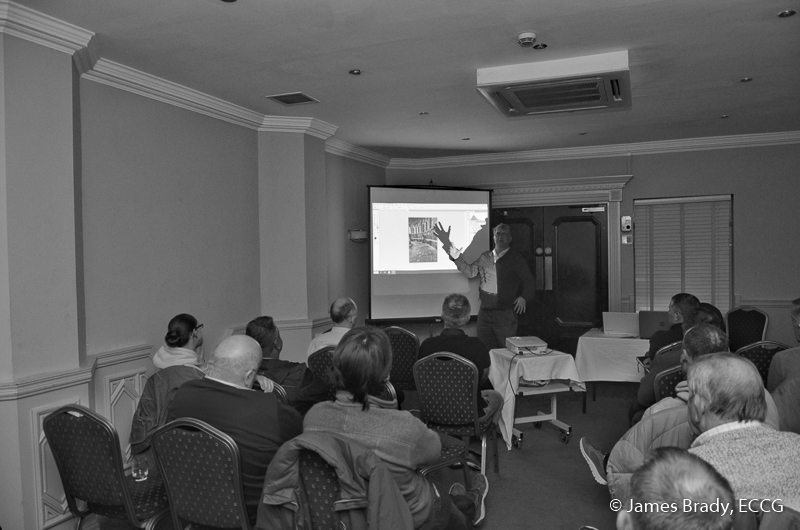
On a dull and overcast Saturday morning on 20th February 2016 last, ECCG returned to visit Cork City for a shoot of a different kind – a photo walk of the city.
After meeting up at Kent railway station, we made our way to the city towards the Grand Parade and across the river footbridge and continued along Bishop Street. We took a left turn and ‘clambered up’ the hill onto Barrack Street. This street is steeped in history with a rich cultural heritage and formed the southern approach to the medevil walled city. The legacy of by-gone days is inherent and the old qualities of the street are still at the heart of many Cork people. The street is highly significant in relation to the military and social history of Cork.
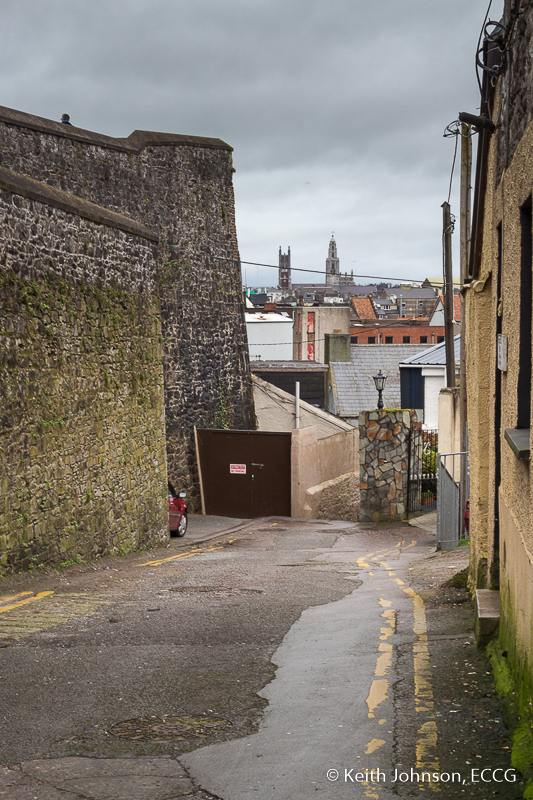 Elizabeth Fort is one such site off Barrack Street a soldiers barracks which fulfilled necessary military and security functions in earlier centuries. In subsequent centuries Barrack Street became the focal point from which further residential development spread from the over populated city centre. As we strolled along this street, we felt an historic feel to this street with its many derelict, abandoned and massive decay.
Elizabeth Fort is one such site off Barrack Street a soldiers barracks which fulfilled necessary military and security functions in earlier centuries. In subsequent centuries Barrack Street became the focal point from which further residential development spread from the over populated city centre. As we strolled along this street, we felt an historic feel to this street with its many derelict, abandoned and massive decay.
After Barrack street we continued towards St Finbarre’s catherdral and down towards Washington street and headed towards the University of Cork (UCC).
UCC was founded in 1845 with 2 other Queen’s Colleges Belfast and Galway. It became University College Cork under the Irish Universtities Act of 1908. On the site, the Tudor Gothic quadrangle and early campus were built by Deane abd Woodword. The ‘Long Hall’ and the Clock Tower of the UCC quadrangle provided plenty of interest for photographs as well as challenges with serious use of wide angle lenses in some cases.
After UCC, we headed to the Mardyke area historically left as an open space. The Presentaion Brothers College, the Mardyke and Cork County Cricket Club and Fitzgerald Park are some of the well known landmarks of this part of the city.
 Daly’s Bridge, the Pedestrian bridge known locally as the ‘Shaky Bridge’ was built in 1926 and spans the River Lee and is the habitat of much bird life. The pedestrian bridge is made from timber planks and wrought iron supports. While there, we took the opportunity to walk across the bridge and experience for ourselves the ‘shakiness’ of the bridge.
Daly’s Bridge, the Pedestrian bridge known locally as the ‘Shaky Bridge’ was built in 1926 and spans the River Lee and is the habitat of much bird life. The pedestrian bridge is made from timber planks and wrought iron supports. While there, we took the opportunity to walk across the bridge and experience for ourselves the ‘shakiness’ of the bridge.
After a brief stop at the Shaky bridge we headed back towards the city via Fitzgerald Park. The park is named after Edward Fitzgerald the city’s Lord Mayor who was instrumental in organising Cork’s International Exhibition. The original pavillion and ornamental fountain from the exhibition era can still be seen today. The Park spans 18 acres with landscaped gardens rich with trees, shrubs as well as many sculptures and a wealth of history with the Cork Museum located on this site. While stopping for a break, the centre piece of the Park the Sky garden 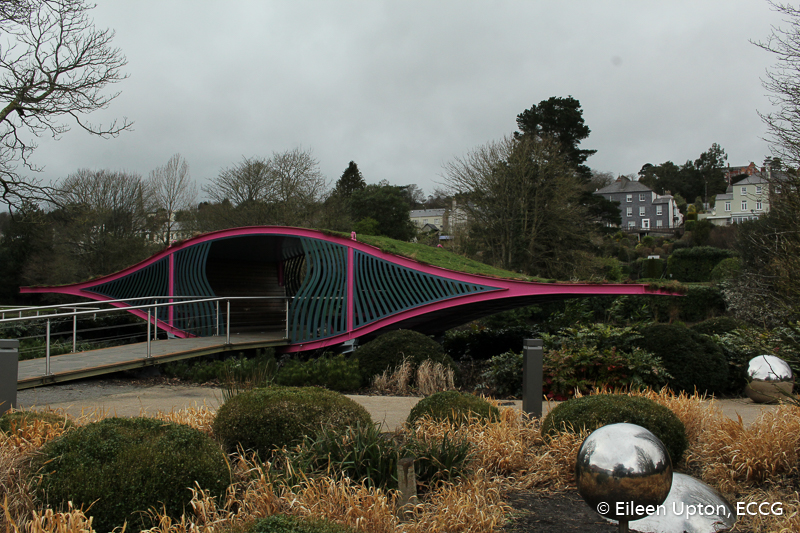 Pod became a subject of interest to photograph. This unusual garden piece won a medal at the Chelsea Flower show and later was transformed from a flying Sky garden to a platform over the River Lee. The Pod is surrounded by a colourful display of plants, shrubs and reflective stainless steel spheres and domes.
Pod became a subject of interest to photograph. This unusual garden piece won a medal at the Chelsea Flower show and later was transformed from a flying Sky garden to a platform over the River Lee. The Pod is surrounded by a colourful display of plants, shrubs and reflective stainless steel spheres and domes.
In the early afternoon and blessed with no rain, we headed back to the city and Kent Station, stopping momentarily to take shots of various landmarks including a large wall mural at the intersection of North Main street and Paul Street.
An enjoyable day was had by all with a variety of places visited from old to modern day coupled with an education and appreciation of the historical elements to Cork city.
Click here to see a gallery of images from this shoot. Enjoy!
– Noelle Lowney
If you have an interest in photography and would like to find out more about East Cork Camera Group, click the ‘Contact Us‘ link and leave us a message.

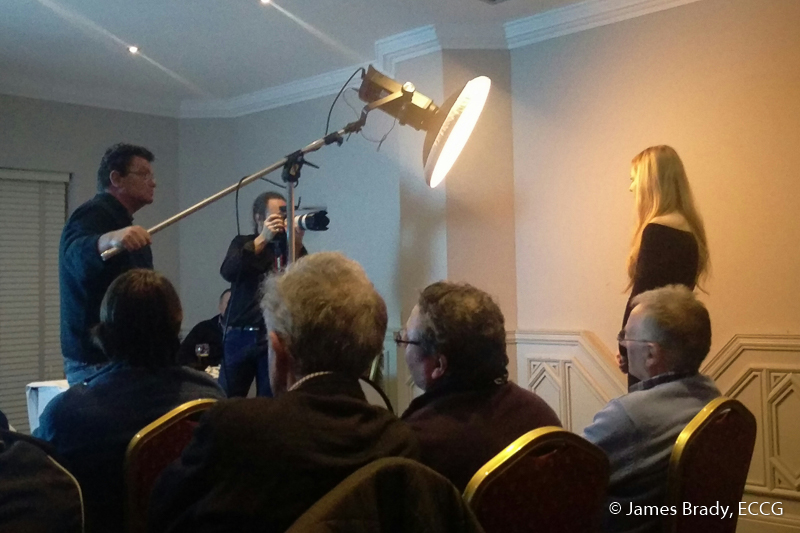
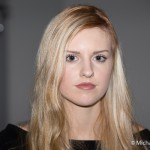

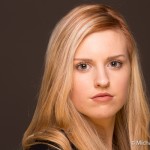
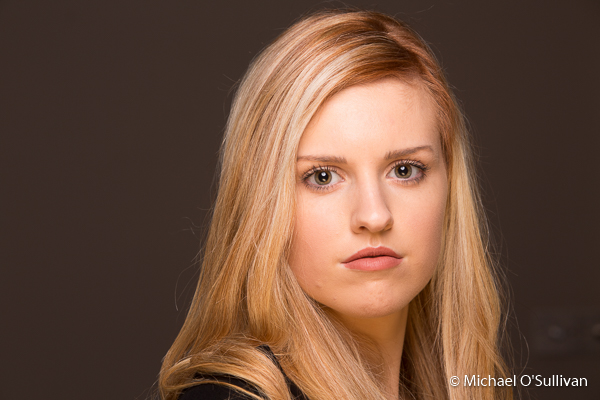

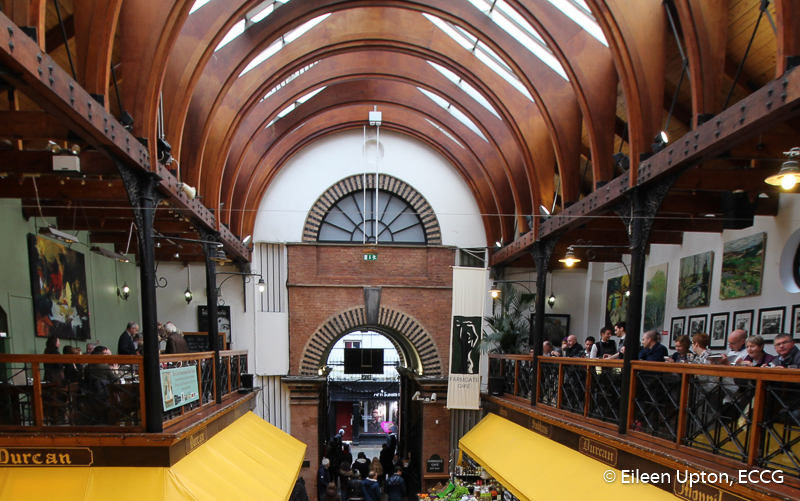 We then made our way to the one of the ‘jewels of Cork City’ the Old English market. This market is one of the oldest markets in Cork with long history dating back to the 1788. It is the main shopping institution with Cork people with its unique character, cosmopolitan atmosphere, vibrancy and rich shopping experience. Various stalls selling a variety of farm produce and a more exotic fare with foodstuffs from all over the world as well as the traditional meat, tripe and ‘drisheen and fish. The array of colour provided great photo opportunities in this interesting place.
We then made our way to the one of the ‘jewels of Cork City’ the Old English market. This market is one of the oldest markets in Cork with long history dating back to the 1788. It is the main shopping institution with Cork people with its unique character, cosmopolitan atmosphere, vibrancy and rich shopping experience. Various stalls selling a variety of farm produce and a more exotic fare with foodstuffs from all over the world as well as the traditional meat, tripe and ‘drisheen and fish. The array of colour provided great photo opportunities in this interesting place. We then walked to St Fin Barre’s Cathedral situated near the heart of City. Before going into the Cathedral grounds we took a detour to the left of the side entrance, up steps towards Barrack Street to view a very colourful urban street art, primarily recalling the Rolling Stones Irish tour in 1965. Once we finished here we returned to the St Fin Barre’s cathedral. The building was built in 1863 by the Victorian architect, William Bruges and was dedicated to St Fin Barre, replacing a previous building which once stood on the same spot believed to be the site of a monastery founded by the St Fin Barre in the 7th century. The present cathedral building is from the neo gothic period and is made from Cork limestone, marble as well as Bath Stone. We spent some time in the grounds of the cathedral capturing the immense exterior of this towering building with its spiky spires, gurning gargoyles and rich sculpture which all contribute to it’s magnificent presence and stature.
We then walked to St Fin Barre’s Cathedral situated near the heart of City. Before going into the Cathedral grounds we took a detour to the left of the side entrance, up steps towards Barrack Street to view a very colourful urban street art, primarily recalling the Rolling Stones Irish tour in 1965. Once we finished here we returned to the St Fin Barre’s cathedral. The building was built in 1863 by the Victorian architect, William Bruges and was dedicated to St Fin Barre, replacing a previous building which once stood on the same spot believed to be the site of a monastery founded by the St Fin Barre in the 7th century. The present cathedral building is from the neo gothic period and is made from Cork limestone, marble as well as Bath Stone. We spent some time in the grounds of the cathedral capturing the immense exterior of this towering building with its spiky spires, gurning gargoyles and rich sculpture which all contribute to it’s magnificent presence and stature.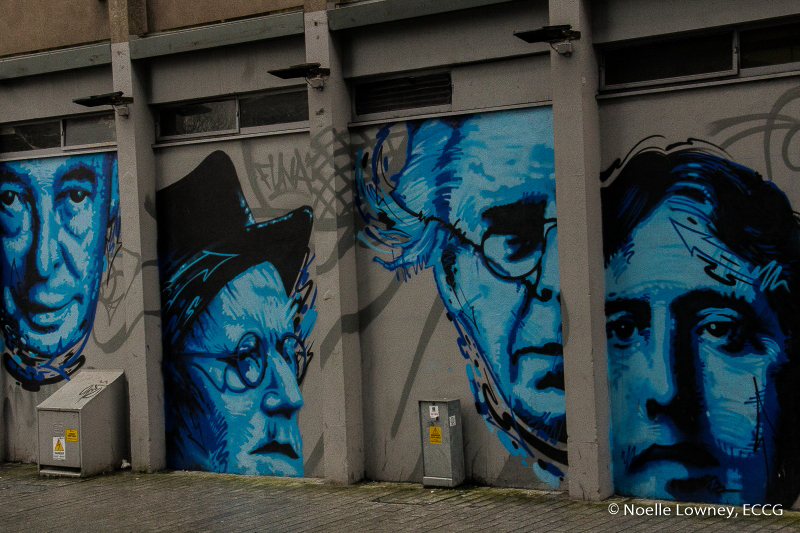 As we made our way back towards the city centre we stopped, en route, to take photos of the red and white wrought iron foot bridge located in the North Mall area and also the very colourful buildings on the other side of the river. As we approached the Corn Market and North Main streets there were more beautiful urban art images to be found. On reaching the top of North Main street we crossed into Paul Street walking to the end of Half Moon street to view the amazing wall art on the side wall of the Cork Opera House. The large mural which runs the length of the street features giant stylised portraits in three tones of electric blue of literary giants such as George Bernard Shaw, WB Yeats, Oscar Wilde, James Joyce, Samuel Becket and more.
As we made our way back towards the city centre we stopped, en route, to take photos of the red and white wrought iron foot bridge located in the North Mall area and also the very colourful buildings on the other side of the river. As we approached the Corn Market and North Main streets there were more beautiful urban art images to be found. On reaching the top of North Main street we crossed into Paul Street walking to the end of Half Moon street to view the amazing wall art on the side wall of the Cork Opera House. The large mural which runs the length of the street features giant stylised portraits in three tones of electric blue of literary giants such as George Bernard Shaw, WB Yeats, Oscar Wilde, James Joyce, Samuel Becket and more.
